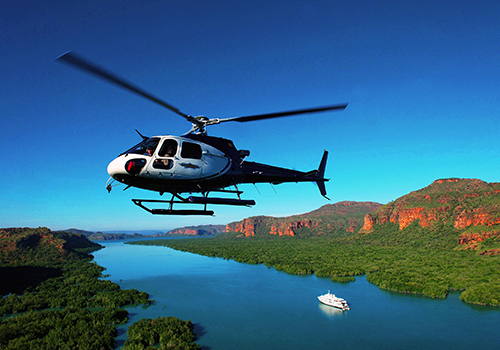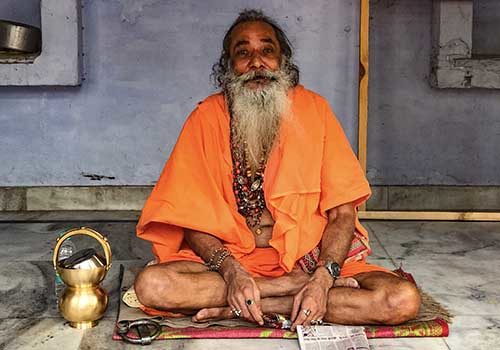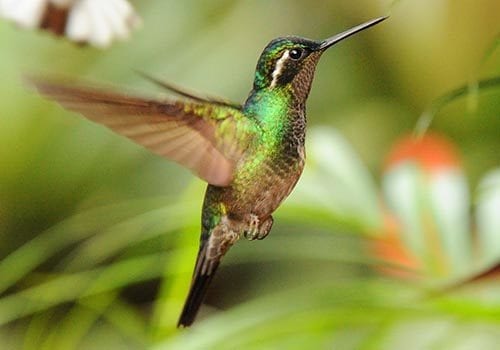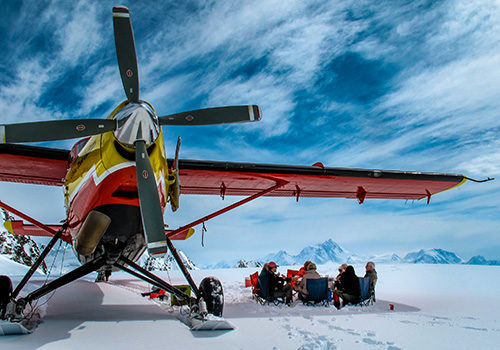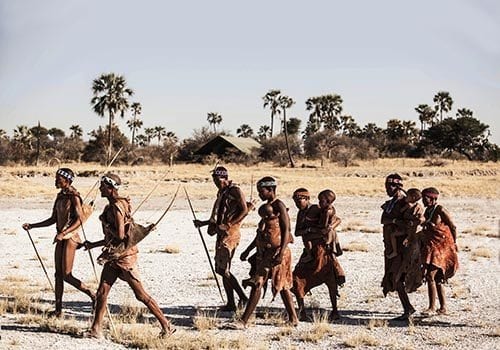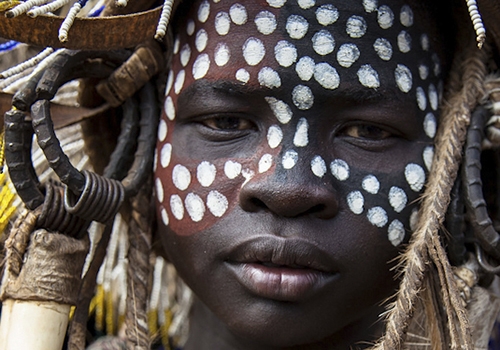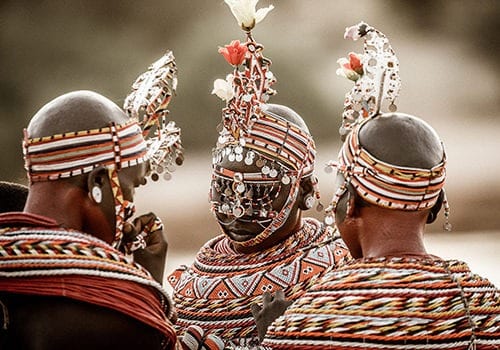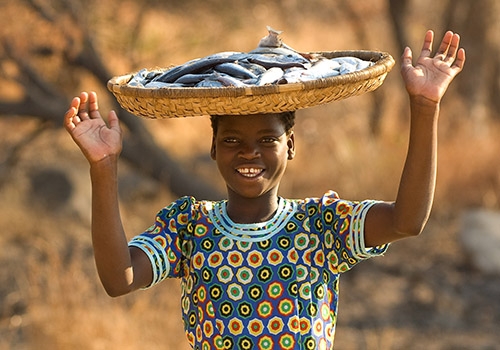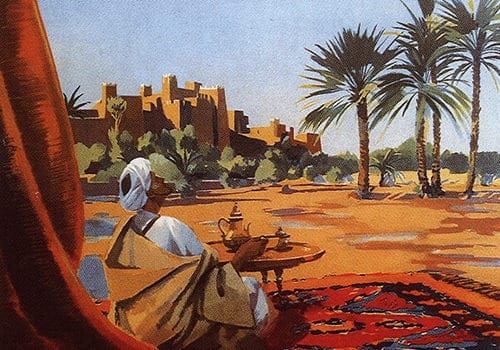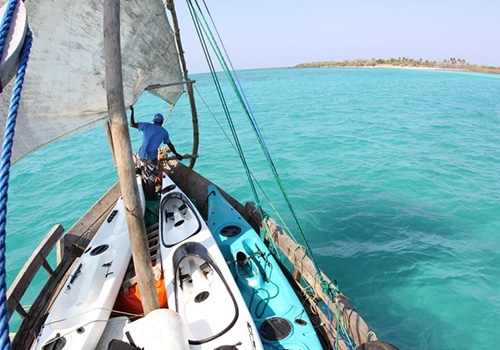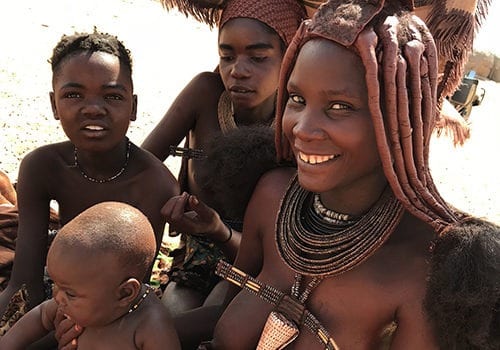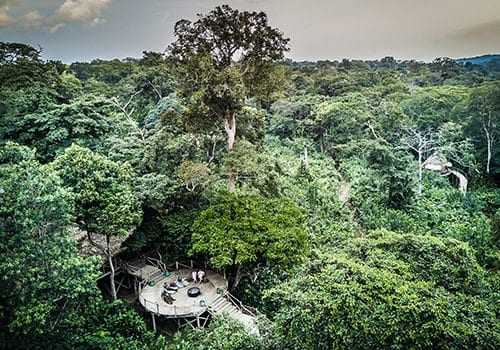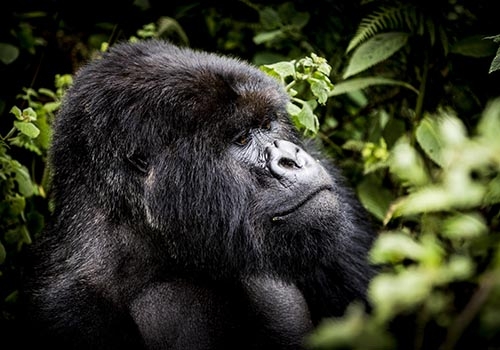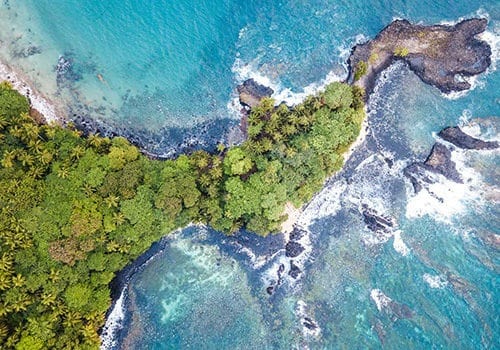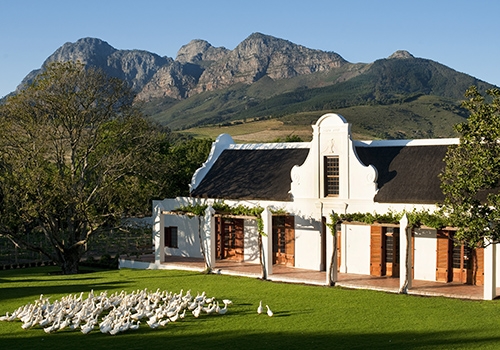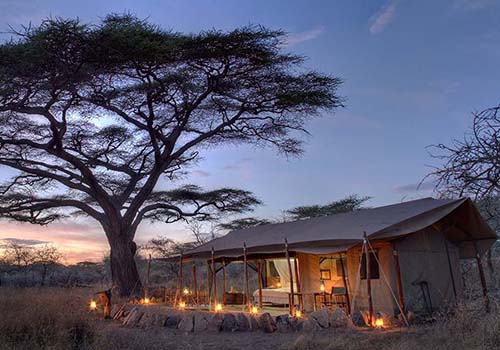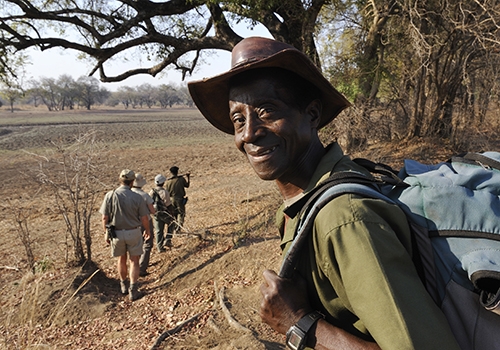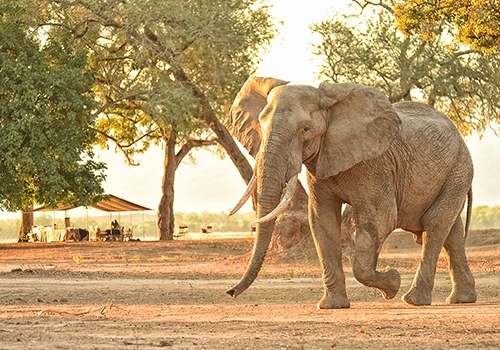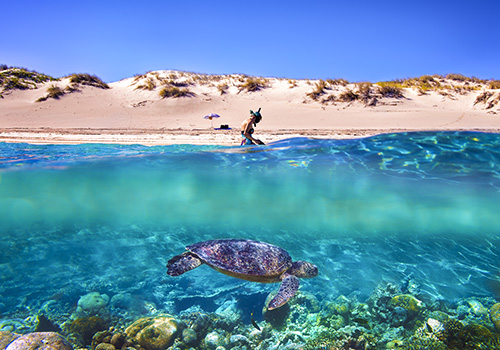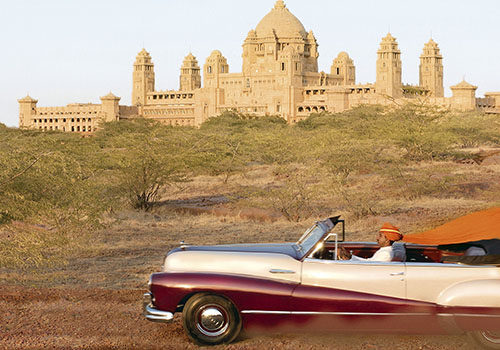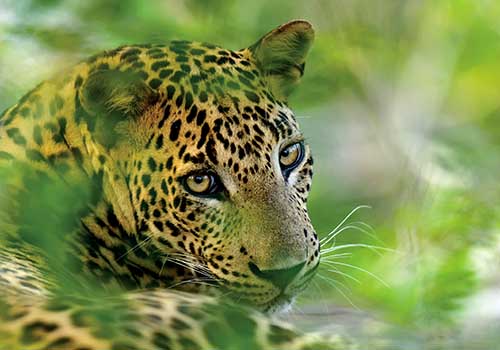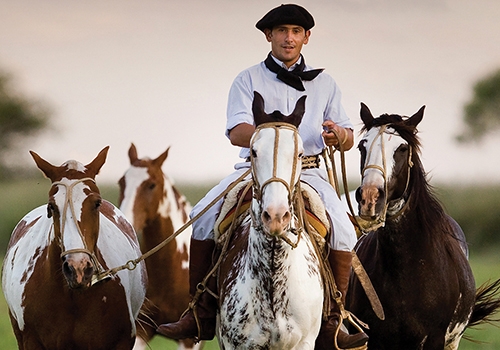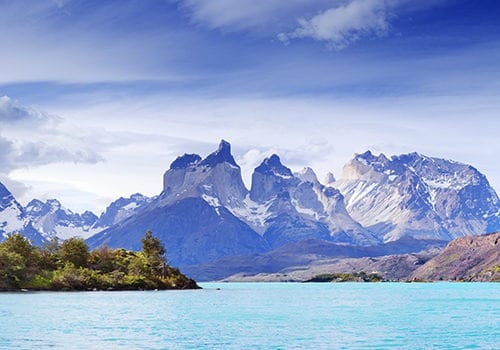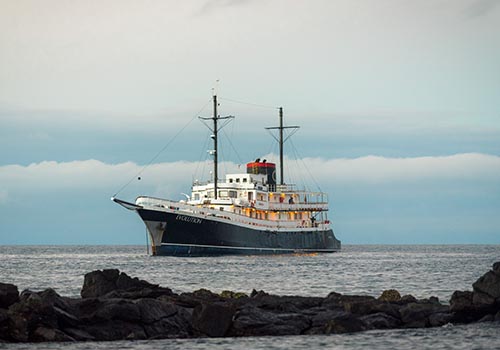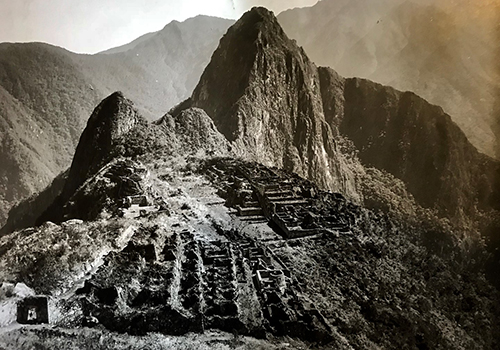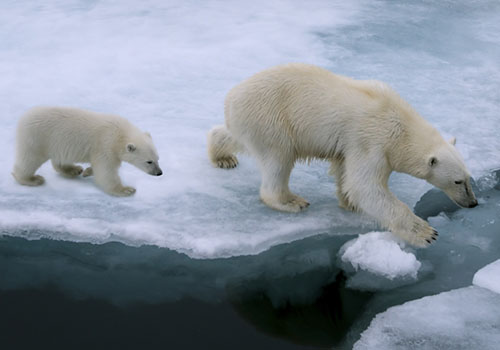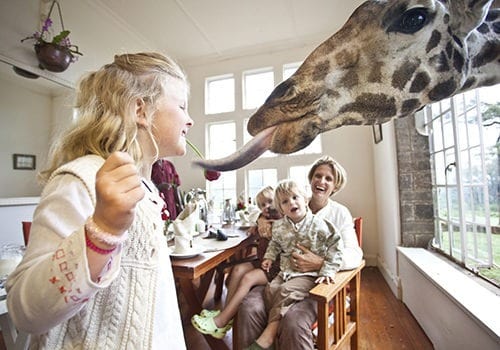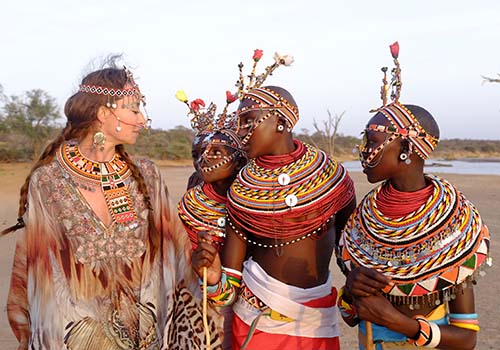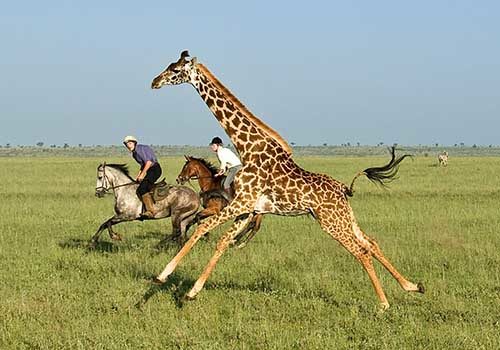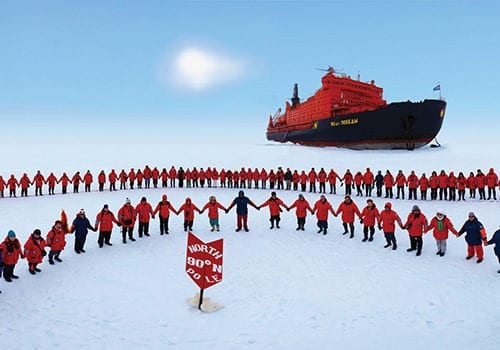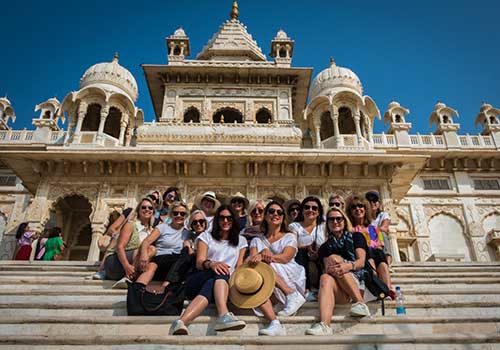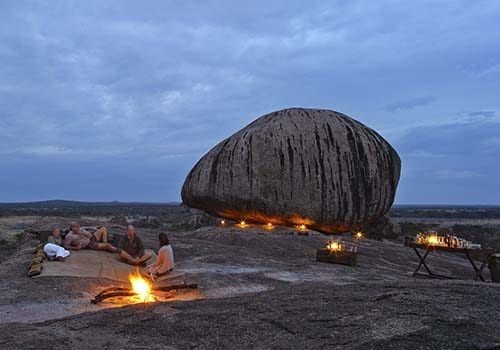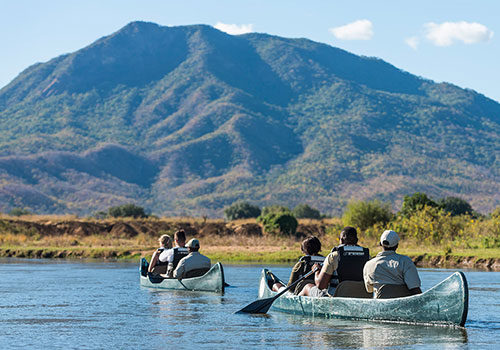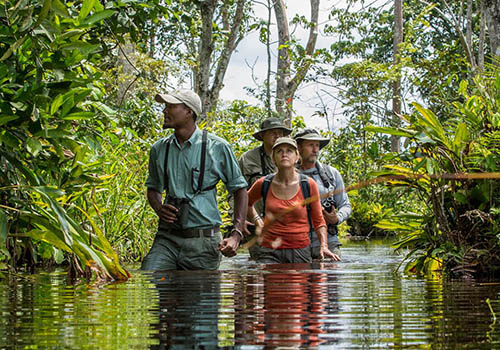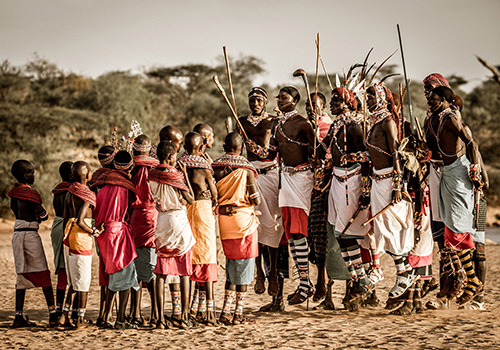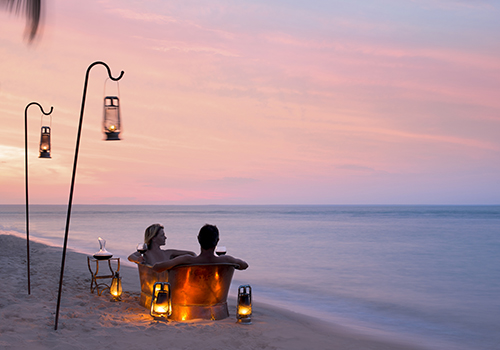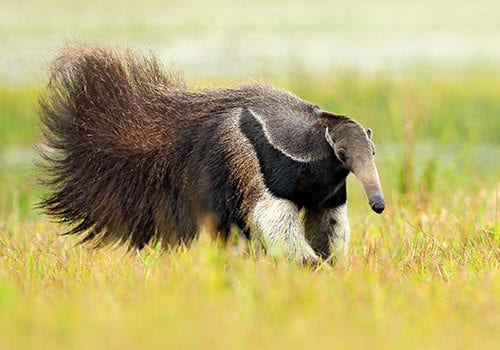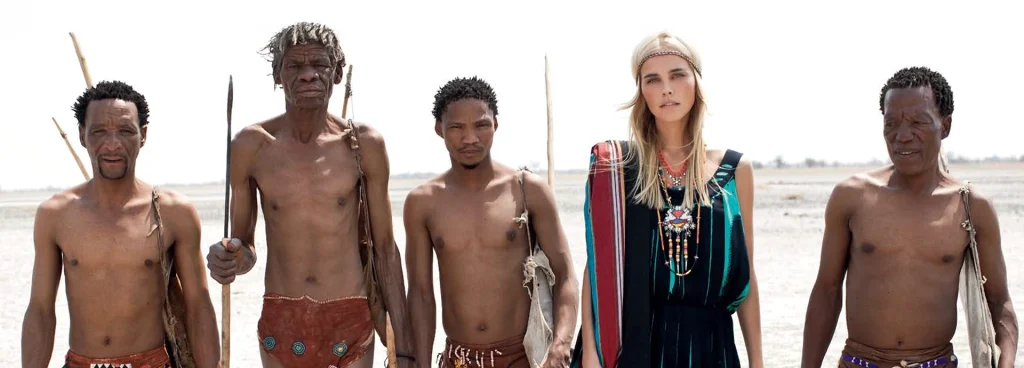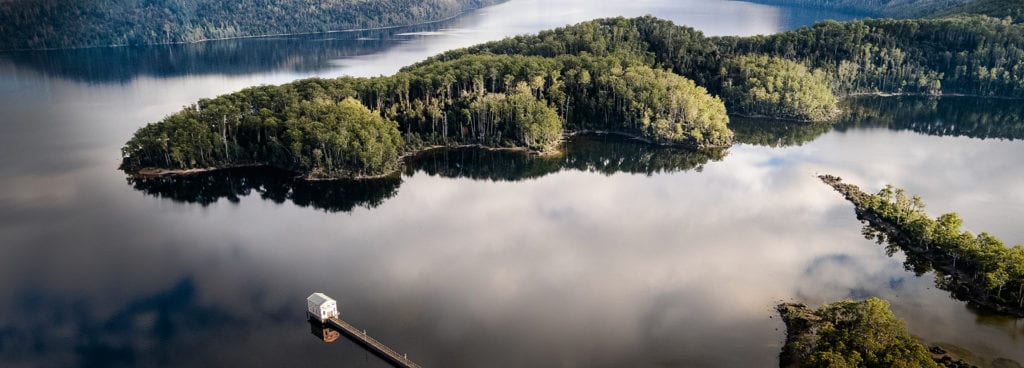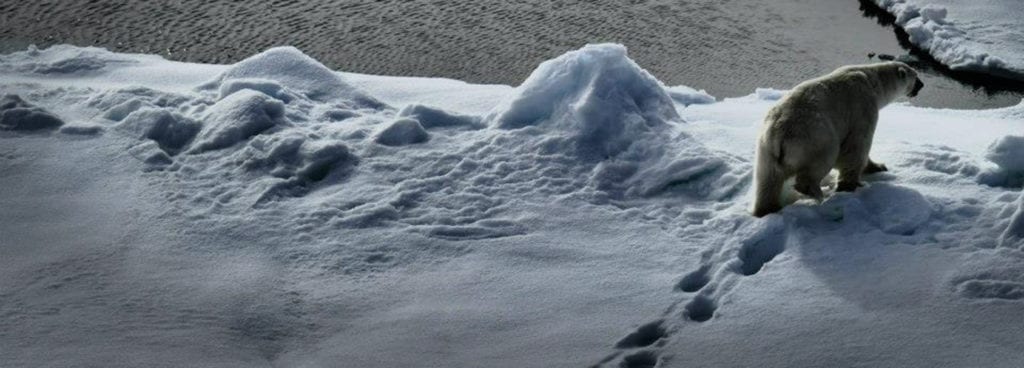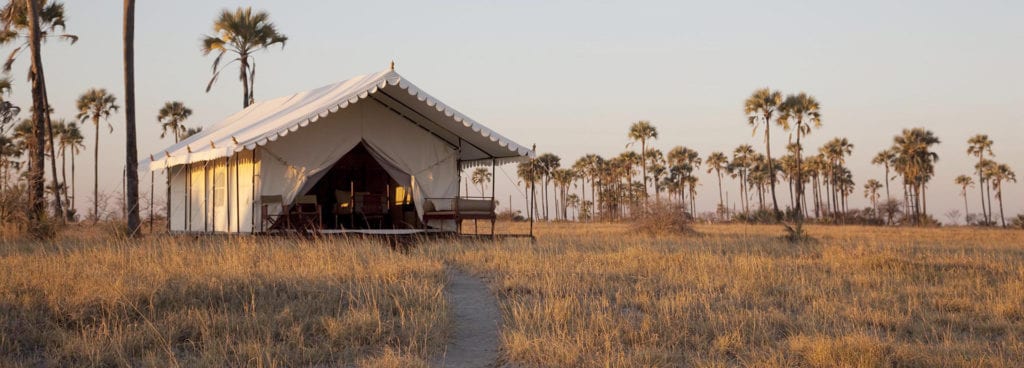DISPATCHES FROM EXOTIC LANDS
When planning a luxury safari, one of the most common questions is: when is the best time to visit? It’s an understandable query—after all, you want to optimise every aspect of the experience, from lush landscapes to rich game, and all while preferably avoiding stifling heat, heavy crowds and heavier downpours.
Unlike some African countries, the best time to visit Botswana is a far more nuanced answer than a single month or season. In truth, every time of year in Botswana offers its own unique magic. From the shimmering floodplains of the Okavango Delta to the stark beauty of the Makgadikgadi Pans and predator-rich Moremi Game Reserve, Botswana’s appeal shifts subtly and beautifully with the seasons.
Green Season (November – March): A Photographer’s Dreamscape
The green season begins with the first rains in late November and lasts through to March. This period sees Botswana burst into life, with lush vegetation carpeting the plains and newborn antelope wobbling across the grasslands. It’s a time of dramatic skies, shimmering pans and quietude—one of the country’s best-kept secrets.
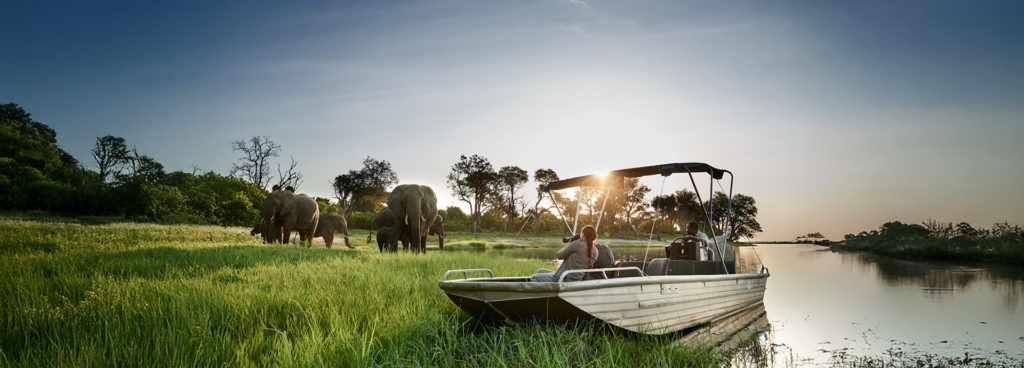
What to Expect
The green season begins with the first life-giving rains in November, when parched earth gives way to vibrant greens almost overnight. Dramatic afternoon thunderstorms sweep across the sky, painting bold streaks of light and shadow over endless horizons. The rains bring relief from the dry heat and stir the bush into action—trees burst into leaf, grasses grow tall, and the air becomes rich with scent and birdsong.
Days tend to begin bright and fresh, with clouds building throughout the afternoon and short, spectacular storms often arriving in the evening, allowing plenty of time for morning game drives and activities. Wildlife becomes more dispersed, but the sightings that do happen are often more intimate. This is the birthing season, and the bush teems with young antelope, foals and calves—offering predators easy pickings and photographers exceptional moments. Birders will revel in the arrival of countless migratory species, resplendent in vibrant breeding plumage.
This is the best time to visit Botswana for quieter camps, fewer vehicles and an unparalleled feeling of having Botswana all to yourself.
Best Areas
- Makgadikgadi Pans: Witness the spectacular zebra and wildebeest migration as they head south to calve.
- Central Kalahari: Bursts to life after the rains, with excellent predator sightings, including black-maned lions.
- Moremi & Chobe: Elephant herds remain, and the landscape is alive with birdlife and baby animals.
Wildlife Highlights
- Large herds of zebra and wildebeest calving on the pans
- Flamingos and migratory birds at their peak
- Predator action as lions, leopards and wild dogs target the young
Shoulder Season (April – May): A Subtle Shift
April and May mark the transition from wet to dry season. The air is clear and crisp, the landscape still green but beginning to thin, and the wildlife is starting to concentrate again around permanent water sources. It’s a lovely time to travel—balancing the verdancy of the green season with the increasing visibility of the dry.
What to Expect
April and May are perhaps Botswana’s most underrated months. The green flush of the rains still lingers, but grasses begin to thin and the air turns crisp and clear. It’s a season of balance—between lush and dry, soft and stark, solitude and emergence. There’s still enough surface water across the landscape to scatter wildlife, but herds start moving towards more permanent sources, making game viewing increasingly reliable.
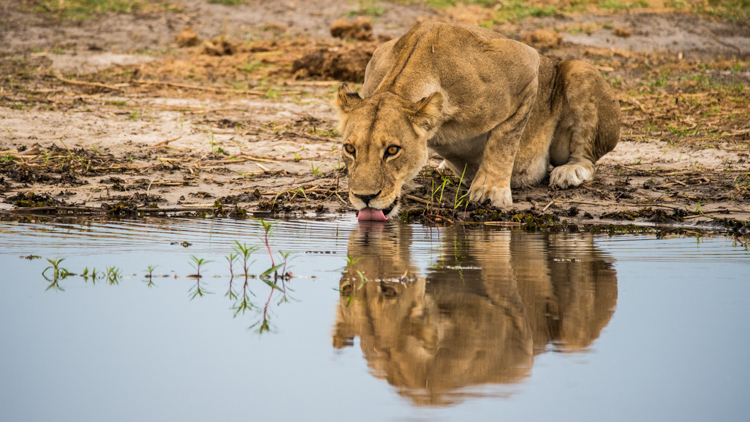
The days are mostly warm and sunny, with minimal rain, and the nights grow cooler. Mornings might start with a slight chill in the air—perfect for early drives wrapped in a blanket with a hot coffee in hand. These conditions are ideal for more active safaris such as horse riding or walking safaris, thanks to manageable heat and firm, dry ground.
With fewer travellers and shoulder-season rates, this is also an excellent time for more exclusive experiences at exceptional value.
Best Areas
- Okavango Delta: Water levels begin to rise from rainfall in the Angolan highlands, transforming the region into a web of sparkling channels.
- Moremi Game Reserve: Wildlife becomes easier to find as grasses recede.
- Nxai Pan & Makgadikgadi: Still green and photogenic, with fewer tourists.
Wildlife Highlights
- Elephants and hippos begin to gather at key water points
- Birdlife remains prolific
- Good predator sightings as herds consolidate
Botswana Voted Best Safari Destination of 2025
Dry Season (June – August): Classic Safari Conditions
This is Botswana’s peak season, and for good reason. The bush is dry and sparse, wildlife is at its most visible, and the weather is simply spectacular—sunny days and cold nights, perfect for fireside storytelling.
What to Expect
This is Botswana at its most iconic—golden savannahs stretching under cloudless skies, crisp mornings giving way to warm afternoons, and wildlife gathering en masse around shrinking waterholes. Because of the drier climate and receding waters, guides are more able to escort you to areas posing the highest likelihood of sightings. Rainfall is almost non-existent during this period, and the bush becomes dry, brittle and sparse, allowing for exceptional game viewing. It is often in the dry season that one can witness Botswana’s most superb safari moments.
Early mornings can be cold, sometimes approaching freezing in the Kalahari and open plains, so packing layers is essential. Days warm to a comfortable 25–30°C, ideal for exploring without the fatigue of high heat. Water-based camps in the Okavango Delta come into their own, with high floodwaters offering unforgettable mokoro journeys, boat cruises and gliding safaris through lily-covered channels.

The skies are brilliant blue, the air is pure and the wildlife is as predictable as it gets—making this the go-to time for first-timers or those seeking that classic safari experience. The only downside to this period is its widely-regarded reputation as the best time to visit Botswana. Though camps and lodges are widely dispersed, tourism is at its peak, as are the accommodation prices. However, this is small compromise for such unforgettable moments.
Best Areas
- Okavango Delta: At its most dramatic and scenic, ideal for water-based safaris.
- Moremi Game Reserve: A predator haven, with lions, leopards and wild dogs all on the hunt.
- Chobe National Park: Huge herds of elephants along the riverfront.
Wildlife Highlights
- Reliable sightings of big cats and large herbivores
- Elephant herds numbering in the hundreds
- Rare sightings of African wild dogs and honey badgers
Late Dry Season (September – October): Intense & Rewarding
As the dry season wears on, temperatures rise and water becomes increasingly scarce. This concentrates game like never before, especially along permanent waterways and the last remaining pans. Though it’s hot, this is perhaps the most dramatic time for game viewing.
What to Expect
September and October mark the crescendo of the dry season. With little to no rainfall for months, the bush is at its barest, and water is in critically short supply—forcing wildlife into predictable patterns around waterholes, riverbanks and artificial pans. These conditions make for some of the most intense and dramatic game viewing in Africa, as predator and prey share increasingly tense spaces and a sense of urgency and desperation hangs over the landscape as it awaits the coming rains.
While the heat is significant – particularly in October, when daytime temperatures regularly soar above 35°C, and in some areas can edge toward 40°C – the humidity is low, and for we Australians used to summer days in the low 30s but stiflingly humid, even these high temperatures are perfectly manageable. However, this is not the time for long hikes or midday excursions, but for those who can manage the heat (or choose lodges with pools and siestas), the rewards are unmatched. Early morning and late afternoon game drives deliver high drama, while the midday hours are best spent relaxing in the shade, camera in hand, ready for the wildlife that wanders through camp.
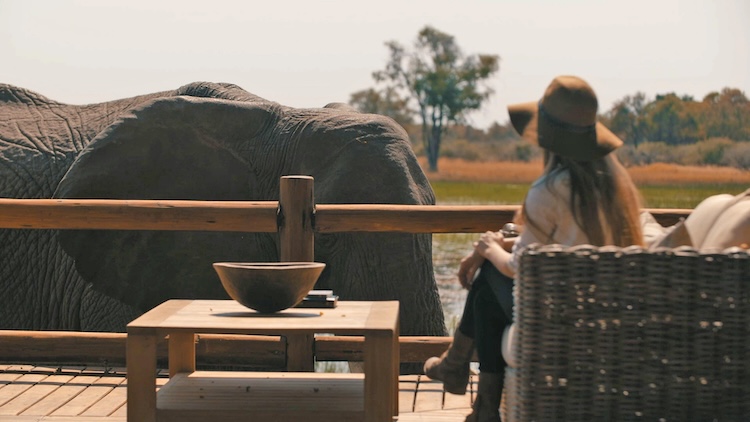
Birdlife starts to return, adding flashes of colour to the dusty palette, and photographic opportunities abound—especially as animals are pushed into the open.
Best Areas
- Chobe & Linyanti: Absolutely teeming with elephants.
- Savuti: Known for lion vs. elephant interactions, particularly in October.
- Delta edges & dry-land camps: Excellent predator and plains game viewing.
Wildlife Highlights
- Peak predator activity, especially in Savuti
- Large concentrations of game at the few remaining water sources
- Elephants dominate northern Botswana, offering exceptional photography
So, When Is the Best Time to Visit Botswana?
There’s no single answer, and that’s the beauty of it. Botswana offers something extraordinary in every season, whether it’s the drama of the dry months, the serenity of the green season, or the transitions in between, and Botswana offers year-round opportunity.
The best time to visit Botswana – if indeed there is one – depends on your interests, priorities and style of safari. Here’s a quick guide to help you choose:
Best Time to Visit Botswana by Interest
|
|
BOTSWANA PACKING GUIDE
Packing List for Green Season (November – March)
Seasonal Notes: Warm, humid days with afternoon showers. Expect lush vegetation, vibrant birdlife, and newborn animals.
Essentials
- Lightweight, breathable clothing in natural tones (light khaki, olive, sand)
- Long-sleeved shirts and trousers for sun and insect protection
- Compact waterproof jacket or poncho
- Sturdy, quick-drying walking shoes or boots
- Wide-brimmed hat and polarised sunglasses
- High-quality insect repellent with DEET
- Malaria medication (consult your GP)
- Binoculars (especially for birdwatching)
- Camera with waterproof cover or dry bag
- Reusable water bottle
- Small, foldable umbrella or rain cover for bags
- Waterproof dry bags for electronics and clothing
Nice-to-Have
- Lightweight gaiters for muddy walks
- Travel laundry soap for washing clothes
- Light cotton scarf for sun and dust protection
- Extra SD cards for photography
Packing List for Shoulder Season (April – May)
Seasonal Notes: Fresh, clear mornings and warm, comfortable days. Bush still partly green with increasingly open landscapes.
Essentials
- Layered clothing for cool mornings and warm afternoons
- Long-sleeved shirts and trousers in neutral tones
- Light fleece or jacket for early game drives
- Walking shoes or lightweight boots
- Sunglasses and sunblock
- Binoculars and camera
- Insect repellent
- Small daypack for walks and drives
- Head torch or small flashlight
Nice-to-Have
- Lightweight gloves and beanie (especially in Central Kalahari)
- Moisturiser and lip balm (air starts to dry out)
- Comfortable lounge wear for camp downtime
- A good wildlife guidebook or birding app
Packing List for Dry Season (June – August)
Seasonal Notes: Cool to cold mornings and evenings, dry days, clear skies. Peak game viewing.
Essentials
- Warm jacket or down vest for morning and evening game drives
- Long-sleeved shirts and trousers in safari colours
- Thermal base layer (especially for Chobe or Kalahari mornings)
- Beanie, gloves and scarf for open vehicle drives
- Comfortable long trousers and jumpers for evenings by the fire
- Good-quality walking shoes or boots
- Sunglasses and high-SPF sunblock
- Lip balm and heavy-duty moisturiser (air is very dry)
- Reusable hot water bottle (some camps provide this)
Nice-to-Have
- Fleece-lined hat or headband
- Lightweight travel blanket for flights or early drives
- Compact thermos for tea/coffee on drives
- Travel-sized hand warmers
Packing List for Late Dry Season (September – October)
Seasonal Notes: Very hot days, clear skies, high wildlife concentrations. Dusty conditions.
Essentials
- Lightweight, loose-fitting clothing in light safari tones
- Short-sleeved shirts and convertible trousers
- Wide-brimmed sunhat with neck protection
- High-SPF sunblock and after-sun lotion
- Sturdy, breathable walking shoes or sandals
- Sweat-wicking underwear and moisture-resistant clothing
- Hydration tablets or electrolytes
- Bandana or buff to protect from dust on game drives
- Sunglasses with good UV protection
- Rehydration sachets or electrolyte mix
Nice-to-Have
- Portable handheld fan or cooling towel
- Travel-size talcum powder
- Cooling body wipes or face mist
- Compact travel umbrella for shade if walking
Photos: Sanctuary Chief’s Camp / Natural Selection

